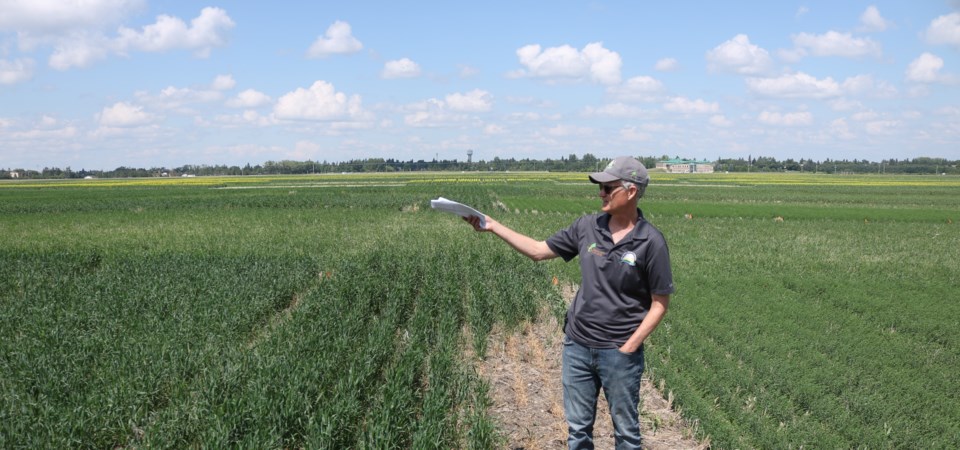YORKTON - Mike Hall, research coordinator for the Yorkton research farm since 2013, explained the research plots are actually the result of a rather unique partnership.
Dating back to 1996, the research was carried out under the sole banner of the East Central Research Foundation on plots near Canora.
The ECRF is a non- profit organization whose mandate is to conduct crop production research and extension activities for the agricultural industry of east central Saskatchewan.
In 2013, the plots moved to their current location as the ECRF partnered with Parkland College (recently re-branded as Suncrest College).
Since its move, Hall said the research station has seen considerable growth, in particular in terms of adding to, and improving equipment used, as the partnership has opened doors to a broader range of dollars.
The partnership has enabled Parkland College to become the first regional college in Saskatchewan to undertake an applied research program which fits with one of its mandates “to serve regional economic development”. Parkland College also uses the field research site to provide agricultural training to students.
“It’s been a really good relationship,” he said, adding the different nature of the two provides “access to different funding sources.”
Hall added dollars come from a variety of sources, pointing to a seeder that was partially funded by money left to the research facility in a will.
The research station also has a relationship with the City of Yorkton, which provides the land, said Hall.
“We’ve been here 10-years.”
The City also provides land to the Health Foundation to raise crops as a fundraiser, and the research farm and Health Foundation actually trade land because the research farm “needs a rotation . . . because we can’t keep putting trials-on-trials.”
What is actually researched at the farm location half mile south of Queen Street on Gladstone Ave S (York Lake Road), is determined largely by a farmer board.
“They make decisions on how we’re spending money on and what sort of projects we do,” he said.
The research farm is also one of eight AgriARM sites in Saskatchewan. Producer-led groups enrolled in this program receive funding for operational costs and necessary infrastructure to support the delivery of agricultural demonstration and research activities.
The objectives of the AgriARM Program are to:
* Increase the adoption of new agricultural production technologies and practices by producers via knowledge transfer and demonstration activities;
* Extend agricultural knowledge transfer and demonstrations to Indigenous communities;
* Provide farmers with more tools for environmental and economic decision-making;
* Develop and maintain an adequate level of infrastructure and expertise for regional applied research and demonstration; and
* Increase public awareness of agriculture's role in environmental stewardship and the overall economy.
Hall said by working with the other AgriARM sites they are able to “share project ideas” and often each site replicates the same trial which amasses eight site years of data in a single year.
By replicating the trials they also see which trials may offer the greatest benefit for producers in certain areas of the province.
Through the years the plot research as looked a wide variety of crops from wheat, oats, barley and canola, to lesser known crops such as soybeans and lentils, to those that are barely grown here, but might be one day such as fenugreek, faba beans, and lupins both among the 2023 plots.
The plot work focuses on a variety of agronomic impactors, from seed treatments, fertilizer rates, in crop applications, and seeding rates.
For example this year, noted Hall they are looking that farmers might limit the cadmium that is absorbed by Flax because South Korean buyers have noted concerns about “too high a levels of cadmium” in seed exported to their country.
Another trial is looking at two products on the market in the U.S. showing promise in corn when applied as a spray to helping the plant fixate nitrogen from the air. It is one of the trials being replicated at all eight AgriARM sites, added Hall.






